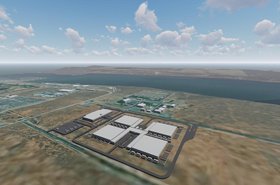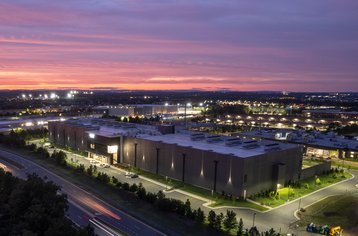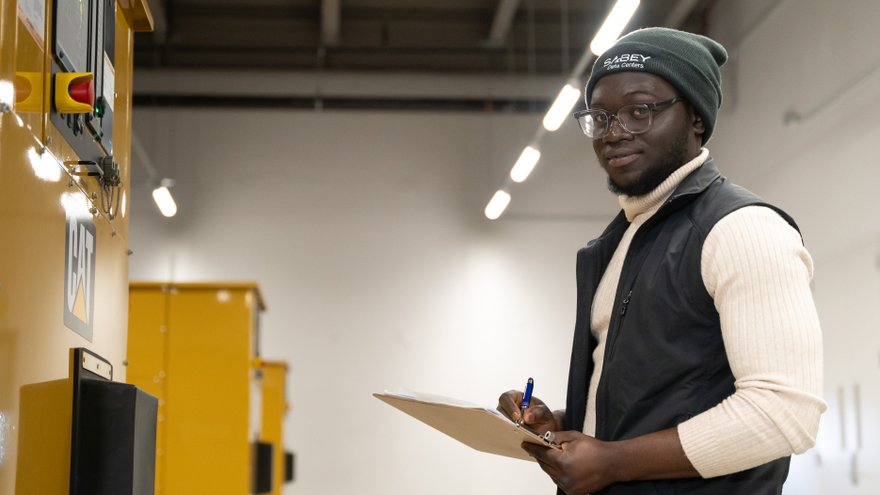Data center operators have endured plenty of criticism over energy consumption and, by extension, energy efficiency. But is it really fair?
With most big-name operators committed to improving sustainability, including some with very ambitious net-zero plans, John Sabey, Sabey Data Center’s executive director, argues that not only have data center operators driven great improvements to the energy efficiency of their own facilities, but have done so throughout society as more and more work (and leisure) has migrated to hyperscale data centers.
“The levels of computational need have risen astronomically over the past two decades and, while power usage and carbon emissions have risen, they have not followed the same exponential trajectory,” says Sabey. And this doesn’t take into account the massive improvements in efficiency arising from the migration of sub-par on-premise enterprise data centers across the world, from stuffy backrooms and poorly ventilated basements into hyper-efficient colo or cloud facilities.
Sabey was started up back in the 1970s as a construction company, quickly morphing into a full-service development company that, in the process, found a niche in critical infrastructure defense projects for companies like Boeing. It acquired the institutional know-how to shift effortlessly into the data center market in the late 1990s, developing, constructing and operating all of its own facilities.
“We started leasing some of the space that we had from Boeing to the early data center companies and saw how rapidly that sector was growing, so we decided to build the business around the data center sector,” says Sabey.
Moreover, neither the dot-com bust of 2000, nor the global financial crisis of 2008, arrested Sabey’s rapid development. Today, Sabey develops data centers across the US, but particularly in the Pacific Northwest, Virginia, New York, and Texas.
“We are primarily a wholesale and hyperscale data center provider, and still a privately held company,” he adds, “but we’re also one of the few that has our own construction company, affiliated with Sabey, which differentiates us quite substantially from other providers and gives us a little bit more flexibility.”
All this has enabled Sabey to focus squarely on practical energy efficiency, both in terms of its buildings and the efficiency of the systems they run. Unlike some big-name companies, though, Sabey isn’t window dressing its data centers with showpiece high tech that may not be practical or affordable in the mainstream.
“Everyone loves all the conveniences of the modern economy – Netflix, online banking, online gaming, even telehealth – and now there’s artificial intelligence, such as ChatGPT, which people are keen to experiment with. But all of these things need data centers to provide the services that we love,” says Sabey.
Data center operators aren’t just responding to the market, but are doing so as power efficiently as possible.
“If you didn't have a concentrated campus or building for a data center, you would essentially dis-aggregate all of that compute into people's headquarters: smaller buildings, corporate offices, basements and so on.
"If you dis-aggregate all of those things that provide the services, they would end up using far more power. A data center campus provides economies of scale, both in terms of power usage, as well as the resources required to provide the electronic services,” says Sabey.
Data centers, moreover, are a key foundational stone, supporting the work to resolve climate change. Sabey points out that much of the computation behind climate change, including meteorological research and sustainability models, is done – and has to be done – on high-end compute and supercomputers hosted in data centers.
Facts, evidence, and statistics
According to Mark Twain, there are two kinds of people in the world: “Those who believe that numbers never lie, and those who know better.”
The numbers around data center energy consumption could certainly be classified as “interesting,” with some of the wilder forecasts suggesting that data center power consumption could account for up to 20 percent of modern economies’ electricity output in just a few years. Current, more sober estimates suggest that data centers consume between two and three percent of global electricity output.
But, says Sabey, few people have a real understanding of just how much work (as well as play) has shifted to data centers, often from much less efficient sources; and, perhaps worse still, many of the Western world’s elected representatives who ought to to be better informed, often aren’t.
“Politicians could help change the narrative, but most elected officials have not been to a data center and seen all of the energy efficiency measures that have been built in. Yes, we do use a lot of power, but we definitely do everything we possibly can to minimize energy usage at scale. We’d really like to have those conversations with them and help them make those connections.
“After all, if you think of all the things that have moved to the cloud, two or three percent total electricity use is pretty efficient. That covers banking, healthcare, it runs hospitals, supports the entertainment industry and so much more. Essentially, something like 90 percent of the economy in the US has gone digital and is supported in some way by a data center.
“If the majority of the economy has moved online and data centers are only using just two or three percent of the power, I’d suggest that’s a positive, not a negative,” he says.
Indeed, if you look, for example, at power usage in the UK, despite the massive growth of the data center sector, not to mention growth in population, the country’s power output over the past 20 years has declined, not increased. The shift from atomized, inefficient in-house enterprise data centers to state-of-the-art cloud and colo has been one of the drivers of this trend.
Moreover, the data center industry has also been a major driver of more sustainable practices, whether that’s Sabey and others specifying the use of low-carbon concrete for new-build data center facilities, or suppliers moving towards more environmentally friendly products made exclusively from ‘green steel’ – steel made from new processes that cut coking coal out of the mix.
Indeed, says Sabey, the company is not only transitioning to low-carbon concrete, but has an active materials recycling policy and is making in-roads into the challenge of tracking its Scope 3 emissions, the carbon emissions generated in its supply chain.
Power plays
With so much feverish activity taking place globally around net-zero and sustainability, some of the biggest areas for major change in the data center sector over the next decade or two will be in power generation and backup.
Here, wise calls will need to be made over power generation choices, battery technology and even on-site power. Maybe hydrogen fuel cells could power entire sites – or will ‘green hydrogen’ remain prohibitively expensive? Can battery technology be scaled up to take over from diesel for backup, or will it remain just out of reach? Indeed, with organizations ramping up their Scope 3 emissions tracking, maybe the environmental issues behind battery technology will become a bigger issue?
All these questions and more will increasingly demand an answer.
For backup, Sabey Data Centers still relies on diesel, although it has conducted investigations into a wide variety of alternatives. “We’ve looked at the alternatives to diesel generators, but haven’t adopted any of them yet on the grounds of reliability. We have a lot of diesel generators, but we almost never use them because our facilities are connected to highly reliable grids,” he says.
Railways and roads, he suggests, are a far greater source of diesel emissions than data centers.
Battery technology today, meanwhile, is neither cost-effective, nor efficient as an alternative to diesel backup. At best, suggests Sabey, battery technology is five or ten years away from consideration for full backup – and that’s before the environmental and resource issues behind the mining and refining of lithium, cobalt and other essential raw materials are considered.
The sustainability priority right now, he believes, is out of data center operators’ hands: the transition of power grids to make them better able to support the variability of renewable power – especially wind – and the decarbonization of heating and transport.
In the meantime, Sabey believes that nuclear can reliably provide near-carbon-free baseload power, backed up by gas. More interesting, perhaps, is the development of small, modular reactors – originally developed out of nuclear submarine technology – from companies such as Rolls Royce, Toshiba, Hitachi, Westinghouse, and General Electric.
These could more affordably bring always-on power to areas where data center clusters certainly are presenting supply challenges to local power grids. “We need to do everything we possibly can to source renewable and carbon-free energy as effectively as we can. But you have got to have these base loads, and appreciate that the transition will take time. We could, though, do this thoughtfully over the next decade,” says Sabey.
More on Sabey...
-

The rise and rebirth of carrier hotels
What role do legacy interconnection hubs have a place in a cloud & Edge ecosystem?
-

Sabey Data Centers issues $800 million in securitized notes
Gaining the first A+ rating for data center revenue backed securitized notes
-

Sabey Data Centers purchases 60 acres in Umatilla, Oregon, for 100MW+ facility
And partners with JetCool Technologies



